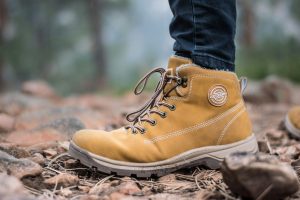High Heels vs. Barefoot Shoes: The Podiatry Debate in Fashion
The fashion industry is full of trends and styles that often prioritize aesthetics over comfort and practicality. One of the most controversial debates in the world of fashion is the ongoing battle between high heels and barefoot shoes. On one hand, high heels have been a staple in women’s fashion for decades, representing elegance and femininity. On the other hand, barefoot shoes have gained popularity in recent years, promoting comfort and alignment for foot health. But which one is better for our feet? Let’s dive into the podiatry debate between high heels and barefoot shoes in fashion.
The Rise of High Heels in Fashion
High heels, also known as stilettos or pumps, have been a symbol of femininity dating back to the 17th century. They were initially created for men to showcase their status and power, but were later adopted by women to enhance their stature and appearance. Today, high heels are seen as a staple in women’s fashion, with countless styles and designs available to suit every outfit and occasion.
The Good
High heels have been praised for their ability to elongate the legs, improve posture, and add a touch of elegance to any outfit. In the world of fashion, they are often considered a must-have item, especially for formal events. The right pair of high heels can make a woman feel empowered and confident, boosting their self-esteem and overall appearance.
The Bad
However, it’s no secret that high heels are not the most comfortable shoes to wear. The towering height and narrow design of stilettos can cause a myriad of foot problems, such as blisters, calluses, and even long-term damage to the feet. The constant pressure on the toes and the unnatural arch created by high heels can also lead to back pain and posture issues.
The Emergence of Barefoot Shoes
On the other end of the spectrum, barefoot shoes have taken the fashion world by storm, promoting a more natural and comfortable approach to footwear. These shoes aim to mimic the feeling of walking barefoot, providing a wide toe box, maximum flexibility, and minimal cushioning. They have gained a loyal following, especially among fitness enthusiasts and health-conscious individuals.
The Good
Barefoot shoes are designed to promote a more natural gait and strengthen the foot muscles, leading to improved balance and posture. They also allow for better proprioception, the body’s ability to sense its position and movement in space. Furthermore, barefoot shoes can help alleviate foot pain and conditions such as plantar fasciitis and Achilles tendonitis, making them a popular choice for those with foot problems.
The Bad
While barefoot shoes have their fair share of benefits, they are not without their drawbacks. The lack of cushioning and support can make it challenging to adapt to these shoes, and some people may experience discomfort or pain when transitioning. Additionally, barefoot shoes may not be suitable for certain activities or environments, such as hiking or walking in urban areas.
The Podiatry Debate: High Heels vs. Barefoot Shoes
When it comes to the health of our feet, both high heels and barefoot shoes have their pros and cons. The podiatry community is divided on which one is better, with some experts advocating for the comfort and natural alignment of barefoot shoes, while others argue that the occasional wear of high heels is not harmful.
The Middle Ground
The truth is, there is no one-size-fits-all solution when it comes to footwear. The best approach is to find a balance between fashion and function. For those who love wearing high heels, it’s important to limit the time spent in them and opt for more comfortable options for daily wear. On the other hand, barefoot shoes may not be suitable for everyone, and it’s essential to listen to your body and adjust accordingly.
The Potential Compromise
Fortunately, the fashion industry has started to take notice of the podiatry debate and has begun to offer more comfortable and ergonomic high heel options. There are now heels with thicker cushioning, lower heights, and even built-in arch support. Similarly, some barefoot shoe brands have incorporated more stylish designs to cater to those who want both comfort and fashion.
In Conclusion
When it comes to high heels vs. barefoot shoes, there is no clear winner. Both have their advantages and disadvantages, and it ultimately boils down to individual preference and lifestyle. As with any fashion trend, it’s essential to listen to our bodies and prioritize comfort and foot health above aesthetics. After all, healthy feet are the foundation for a confident and stylish stride.





